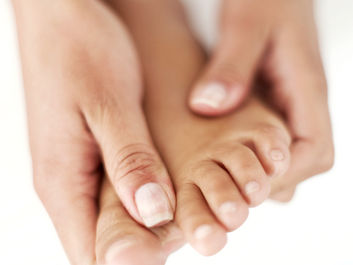

The Bane of Bunions
A bunion is a prominent bump on the inside of the big toe joint due to faulty foot mechanics and increased pressure on the joint. A...


Peroneal Tendonitis
The peroneal muscles (peroneus brevis and peroneus longus) lay on the outside of the lower leg; the two peroneal tendons travel side by...


Hallux Rigidus. Stiff Big Toe?
The most common site of arthritis in the foot is at the base of the big toe, and its incidence is increasing as the population ages....


Posterior tibialis tendonitis
Posterior tibialis tendonitis occurs when the posterior tibialis tendon becomes overloaded and irritated. The posterior tibialis tendon...


Patellofemoral Pain Syndrome
The patella, or kneecap, sits within with the trochlear groove at the end of the femur; our knee is a hinge joint so it's really only...


Morton's Neuroma? Suffering From Numb & Tingling Toes
If you are experiencing forefoot pain, numbness, tingling or have the sensation like you are walking on a marble or a pea a Morton's...


Plantar Fasciitis
Do you have pain in your heels and through the arches of your feet first thing in the morning or when you get up after being seated for...


Achilles Tendinopathy
The Achilles tendon is the strongest and largest tendon in the body! But it is often a sore spot. The Achilles tendon is a connective...


Shin Splints
Medial Tibial Stress Syndrome (MTSS) or what most of us call "shin splints" is a musculoskeletal overuse injury that produces generalized...


Kids - When Should They Be Assessed?
Not sure if you should get your kids feet looked at or if it's just something that they will grow out of? Here are some signs that you...

